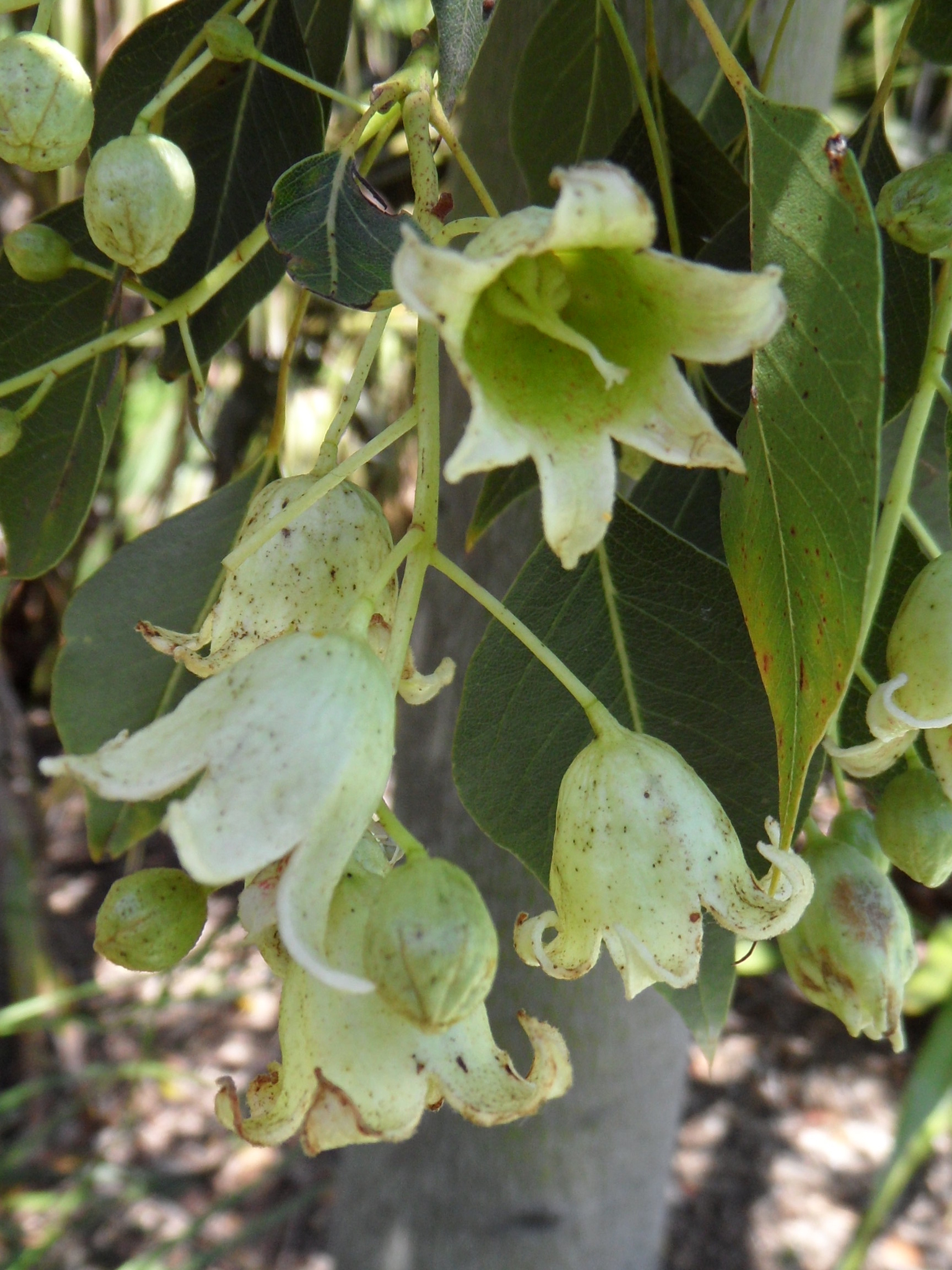
Greek brachys—short, chiton—covering, referring to the persistent loose outer covering of
the seed.
Evergreen or semi-evergreen, occasionally dry season deciduous trees. Trunks sometimes swollen and occasionally multistemmed. Leaves alternate, simple, entire or palmately lobed, often shed in quantity when tree flowering; stipules soon shed. Flowers unisexual in axillary clusters. Petals absent, the sepals cup-shaped, showy and petal-like, cream or green to pink and red. Stamens mostly 10-30 on a stalk (androgynophore) also with about 10-30 sterile stamens. Carpels 5, free, on short stalks. Fruit woody, short-stalked follicles; seeds numerous, embedded in hair.
B. populneus and B. rupestris are used as shelter for stock, and as fodder in periods of drought.
Evergreen trees with woody fruits.
Seed or cuttings.
About 31 species from Australia and Papua New Guinea (2 species, 1 endemic).
Guymer (1988).
Source: (1997). Sterculiaceae. In: . Horticultural Flora of South-eastern Australia. Volume 2. Flowering plants. Dicotyledons. Part 1. The identification of garden and cultivated plants. University of New South Wales Press.
